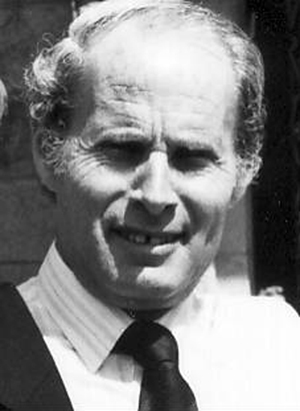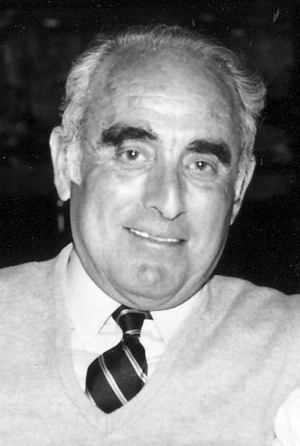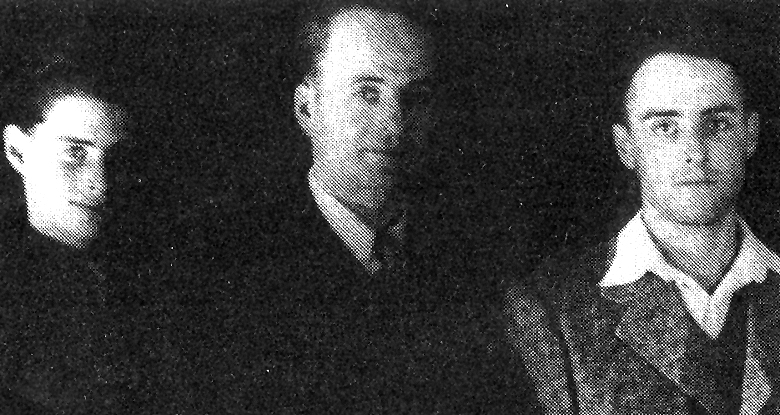![]()
![]() (English version)
(English version)
Introduction:
There are only some events which have left their marks on Jewish children who were held captive in German concentration camps during the period of National Socialism. The book, “The Children's House of Belsen”, describes this terrible torture from a child`s point of view. There is Hetty E. Verolme, a Holocaust survivor living in Australia, who recounts in her book her internment and liberation from the “Children`s House” within the concentration camp of Bergen-Belsen.
The German author and historian, Hans-Dieter Arntz, who lives in Euskirchen near Cologne, has been investigating merit and life`s work of Joseph (“Jupp”) Weiss for more than twenty years. This extraordinary Jewish individual seemed to be forgotten, when Hans-Dieter Arntz reminded his readers of the “Judenältester (Jewish Elder) of Bergen- Belsen in 1983. His book “JUDAICA – Juden in der Voreifel”( pages 434-446) deals with the life of Joseph Weiss (1893–1976), who felt responsible for the “interests” of thousands of Jews in that concentration camp. In comparison with Hetty E.Nerolme the description of surviving Bergen-Belsen from an adult`s point of view is deeply moving. Especially his personal description of “Seder 1945 in the Children`s House” and the poor ceremony is an overwhelming proof of faith and love. This article was written 1946.
Joseph (“Jupp”) Weiss was a German Jew who was born in in Flamersheim, which today is a suburb of the city of Euskirchen. Living in the Netherlands during the Second World War he was buffeted by fate as were all the Jews. But in spite of that, he tried to help his religious community wherever he was able to – even in the concentration camps of Westerbork (Netherlands) and Bergen-Belsen (Germany). Surrounded by thousands of dead bodies, he became the symbol of hope and faith. As a Jewish Elder he was in an ambiguous situation. After the Second World War this position was mostly said to be connected with “cooperation and collaboration with Nazi-Germany”. So a “Jewish Elder” seldom became popular after the Holocaust. But a lot of interviews by the German historian Hans-Dieter Arntz showed that Joseph Weiss seemed to be a person who was able to really do the best for the Jewish prisoners in Bergen-Belsen.
Right in the middle of murder, hunger and desperation he wrote down the names of people who had passed away in Bergen-Belsen. Among 596 prisoners who died on the first day of Pesach - Seder 1945 - were 500 Jews!
Altogether he presented to the Red Cross the names of about 15.000 people who had perished - among them there was ANNE FRANK, a young unknown girl in those days.
This is an excerpt from the article “Jupp Weiss aus Flamersheim – der Judenälteste von Bergen-Belsen” written by Hans-Dieter Arntz. It contains the original report of Joseph Weiss:
Seder 1945 in the “Children's House” of the KZ Bergen-Belsen
From a July 1945 letter by Josef (“Jupp”) Weiss in Holland
to his family in America, England, and Palestine
Translated by Gerald Weiss
“Tonight you have to give a talk in every barracks,” my wife reminded me when I
greeted her in the morning in her barracks. “What can I possibly say?” I replied. “Eighty
percent of the people are ill: spotted typhus, general exhaustion. We are quarantined.
There is hardly any bread left; for 10 days we have received at most one fifth of the
rations to which we are entitled. Butter and bread spread don’t exist for us.”
“As you know, I have spoken on every previous Yom Tov [holiday]. We organized small
meetings in each barrack. Think of our Hanukkah and Purim children’s parties, so
uplifting for young and old alike. Or Hanukkah eve when we lit candles imultaneously
in every barracks, including the infirmary and the old people’s and children’s barracks.
This wasn’t just for the religious people, all Jews took part, not a negligible achievement
in one of the vilest German camps. It is a sign of the strength and will to survive of Jews
from 45 countries who are pressed into these barracks under inhuman conditions.”
“But to speak today, when I am required to recite ‘All who are hungry, come and eat with us?’ No, Erna, that is too difficult for me. I am only human. I shall have to confess to them that we have no more supplies, not even for the most sick and debilitated. And as it looks now, we cannot expect any new food deliveries for the time being.”
“But that is exactly why you have to speak. The Haggadah verse you just cited will have to be the keynote for your talk,” answered my wife in her customary quiet and persuasive manner.
We had been invited to participate in the Seder in the children’s barrack. In the evening, I visited all the barracks in our section (Bergen-Belsen was divided into nine sections, isolated from each other by barbed wire), and what I said went something like this: “It is true that it is a paradox to recite the Haggadah verse ‘Come eat with us’ when the opposite is the case here. We all are hungry. We in the leadership cannot get anything for you; our food situation looks hopeless. I cannot give you bread, all I have is words to persuade you to have courage. Hold out five minutes longer. These are the last five minutes, we can feel it, even though we have no newspapers or radio. We are among the very few European Jews who might possibly survive extermination. We must stick it out because we have an obligation to take part in the rebuilding of the Jewish people. We have seen many nations perish, and the Jewish people has outlived them all. Even after this war, with all our personal sacrifices, the sun will shine for us again.”
“At first I was scared to tell you this tonight. But, on entering your barrack, I saw
candles burning on the few available tables, on the bunks, in the aisles, and small groups
conducting a Seder. Speaking then became easy for me, because I can tell that you feel
the same way.”
At the end of my speech the listeners responded with a loud “Omeyn” from the Ashkenasim and “Amen” from the Sephardim, in every one of the barracks. After ten such speeches I arrived at the children’s barracks where they had been waiting for me before starting the Seder. Here everything was a complete surprise, and as I write these lines today I am filled with pride at what Jewish adults were able to do for Jewish children despite all the humiliation and suffering.
There was a marvelously set table. Seating was provided on benches for two sides and on the lowest bunk of triple-deckers for the other two. A few adult guests were present, among them the widow and children of one of the Dutch Chief Rabbis who had died a few days earlier, and the children of the other Dutch Chief Rabbi who, with his wife, had died of hunger edema at about the same time. Some 30 children dressed in their “best” camp clothes sat beaming around the table. Father Birnbaum conducted the traditional Seder, including all the explanations and answers to the children’s questions. The Seder plate was as prescribed, although with Ersatz [imitation] ingredients.
After the first part of the Seder came a marvelous meal, with various dishes which surprised children and adults alike. They were the artistic creation of Mother Birnbaum who together with her daughters took charge of the guests’ bodily welfare. Wine in Ersatz form was served as well.
Our principal food in our 15 months at Bergen-Belsen had been beets and turnips, but
only once did I appreciate the value of the turnip, namely that evening: the Seder plate,
the meal with its various dishes, and the “wine” (i.e., juice) were 90% turnip derived,
created by Mother Birnbaum’s artistic hands.
The second part of the Seder was as solemn as the first. The Passover hymns were
chanted by the children. Never had I heard them sung more beautifully than by these
young voices. At the conclusion we all joined in the Leshanah Haba’ah Birushalayim
[Next Year in Jerusalem].
We left the children’s barracks deeply moved and returned to the “real world.” I walked my wife and son back to their respective barracks. Then I went to the office in order to compile with my colleagues the usual daily mortality list, by name, for the entire KZ [concentration camp]. Today there were 596 dead, approximately 500 of them Jews...
 |
 |
|
Klaus Albert Weiss (Aharon Zachor, 1984) |
Wolfgang Weiss (1984) |
 Survivors (1945): from left to right: Klaus Albert Weiss, Joseph ("Jupp") Weiss, Wolfgang Weiss
Survivors (1945): from left to right: Klaus Albert Weiss, Joseph ("Jupp") Weiss, Wolfgang Weiss
Dank an: Leo Hoenig (USA), Gerald Weiss (USA), Nadine Reumkens (Niederlande), Helma Beeuwkes (Niederlande), Jewish Historical Museum (Amsterdam/Niederlande).
Copyright for text and photos: Hans-Dieter Arntz, Hasenhecke 16, 53881 Euskirchen/Germany (hans-dieter-arntz@gmx.de).
LINK
Hans-Dieter Arntz: "Jupp Weiss aus Flamersheim, der Judenälteste von Bergen-Belsen" |
|
Hans-Dieter Arntz: "Seder 1945 im" Kinderheim" des KZ Bergen-Belsen" |